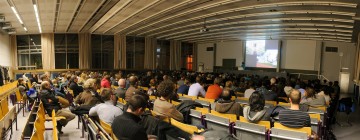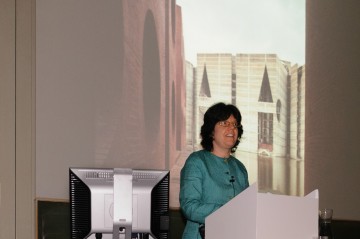Louis Kahn

Louis Isadore Kahn (born Itze-Leib Schmuilowsky) (March 5 [O.S. February 20] 1901 – March 17, 1974) was an American architect, based in Philadelphia. After working in various capacities for several firms in Philadelphia, he founded his own atelier in 1935. While continuing his private practice, he served as a design critic and professor of architecture at Yale School of Architecture from 1947 to 1957.
He spent his early childhood in Kuressaare on the island of Saaremaa, then part of the Russian Empire’s Livonian Governorate. At the age of three, he saw coals in the stove and was captivated by the light of the coal. He put the coal in his apron, which caught on fire and seared his face. He carried these scars for the rest of his life.
In 1928, Kahn made a European tour. He was interested particularly in the medieval walled city of Carcassonne, France, and the castles of Scotland, rather than any of the strongholds of classicism or modernism. After returning to the United States in 1929, Kahn worked in the offices of Paul Philippe Cret, his former studio critic at the University of Pennsylvania, and then with Zantzinger, Borie and Medary in Philadelphia.
Kahn did not arrive at his distinctive architectural style until he was in his fifties. Initially working in a fairly orthodox version of the International Style, he was influenced vitally by a stay as Architect in Residence at the American Academy in Rome during 1950, which marked a turning point in his career. After visiting the ruins of ancient buildings in Italy, Greece, and Egypt, he adopted a back-to-the-basics approach. He developed his own style as influenced by earlier modern movements, but not limited by their sometimes-dogmatic ideologies.
In 1974, Kahn died of a heart attack in a restroom for men at Penn Station in Manhattan. He had just returned from a work trip to India. After his long career, he was in debt when he died.
Kahn had three children with three women. In 2003 his son with Pattison, Nathaniel Kahn, released a documentary about his father, entitled, My Architect: A Son’s Journey.



























